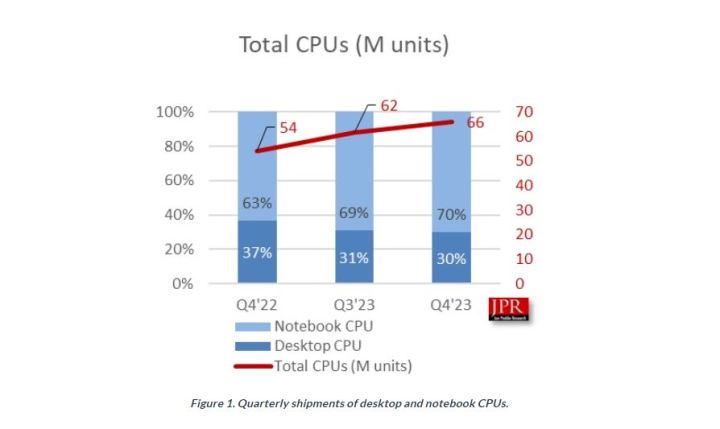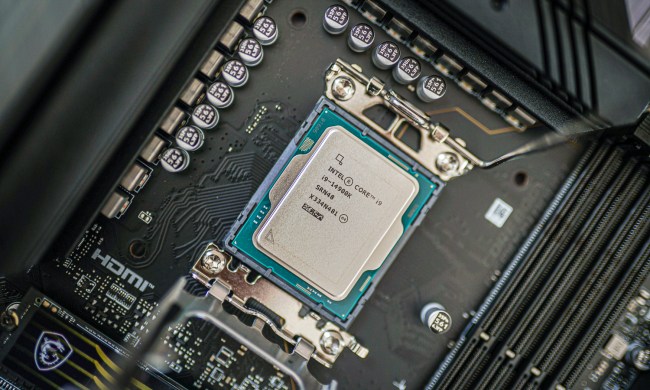
During the pandemic, processors sold like hotcakes — but the demand came to an abrupt halt in late 2022 and early 2023. However, according to the latest report from Jon Peddie Research, CPUs are once again doing better, with a notable increase in shipments. Still, these gains aren’t consistent across the board, which reveals a trend that’s most likely going to stick around.
The improvements are substantial. Jon Peddie Research reports a 7% quarter-to-quarter increase in CPU shipments, but also 22% year-to-year growth. Overall, the client-based CPU market reached 66 million units in the fourth quarter of 2023, up from 54 million in the same quarter of 2022.
It’s no surprise that as CPU shipments increase, the iGPU market sees some growth, too. Most modern processors come bundled with integrated graphics, some of them more impressive, some of them less. As a result, iGPU shipments increased by 18% year over year, and JPR expects that the penetration of iGPUs in the PC segment will soon reach a whopping 98%. This is a five-year projection.

While the news is good for the CPU market as a whole, not all kinds of chips are in equal demand. The truth is that notebook CPUs are doing much better than desktop chips. In the final quarter of 2022, desktop processors accounted for 37% of all CPU shipments. One year later, at the end of 2023, mobile chips were even more popular than before, with a 70% market share for notebooks and 30% for desktops.
This is one trend that’s probably not going anywhere. The pandemic saw a surge in desktop PCs due to various lockdowns and more time spent at home, but on the whole, many people may prefer laptops to desktops. It’s all down to mobility, and as remote workers go hybrid or even go back to the office full-time, a laptop can come in handy.
Although Jon Peddie Research hasn’t shared the exact data for the market split in CPU shipments between AMD and Intel, there’s a graph on total PC iGPUs showing some growth for AMD. At the end of 2022, AMD had a measly 13% share in this segment; one year later, it’s at 16%. However, this could be down to the fact that AMD hasn’t included integrated graphics in most of its CPUs. Meanwhile, nearly all Intel CPUs have integrated graphics.
One thing to note here is that shipments don’t mean sales. These CPUs and laptops may still be sitting on the shelves, waiting to be bought — but an increase in shipments reflects improvements in the state of the PC market. This is good news, and hopefully, should bode well for Intel, which — despite a strong last quarter — saw a 14% decrease in revenue year over year in 2023.




